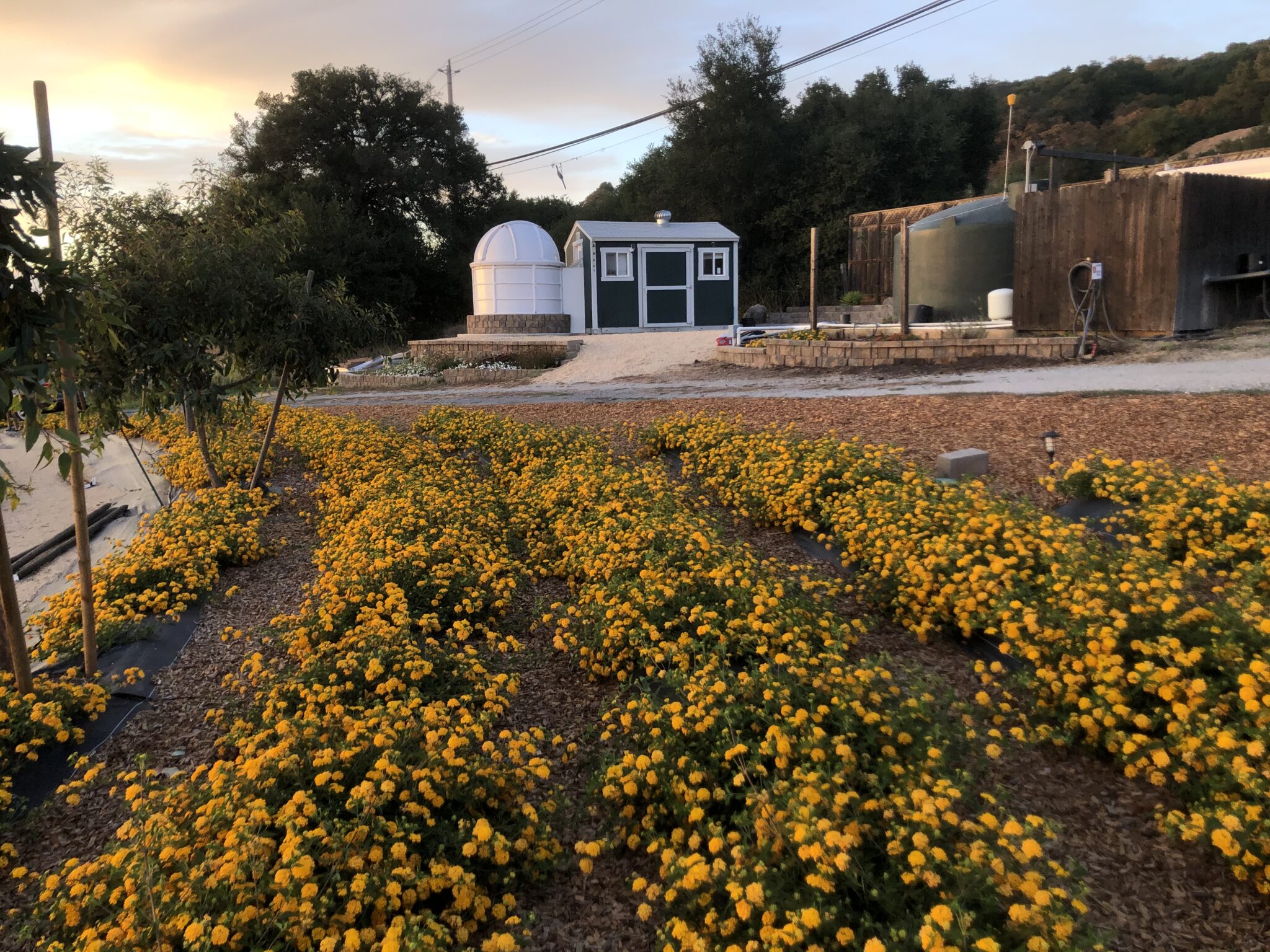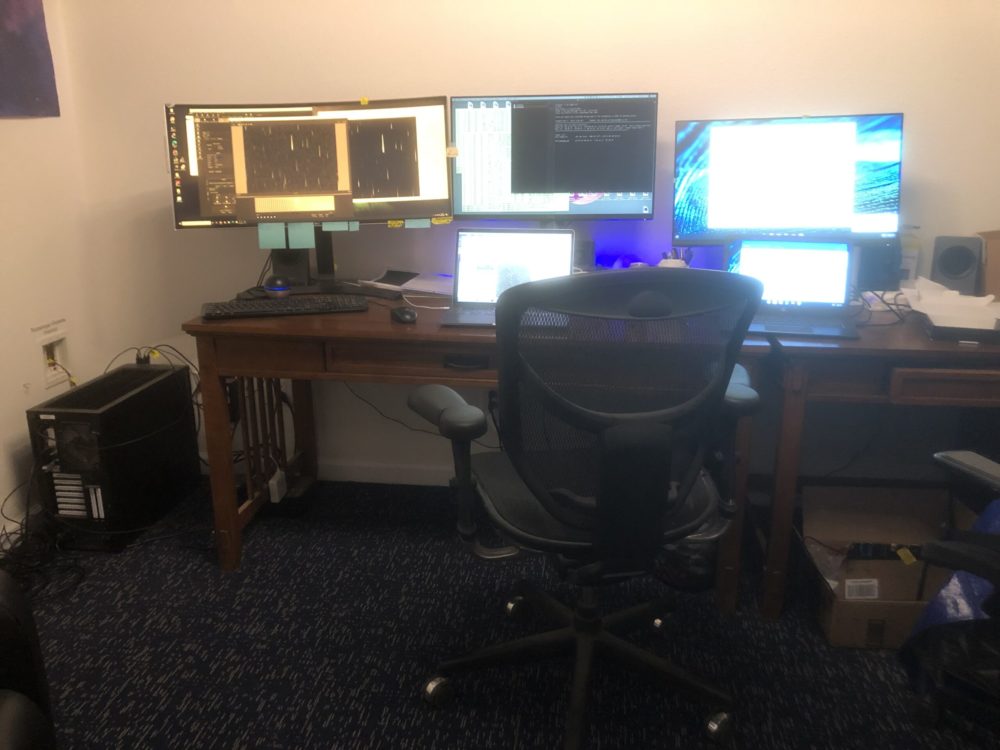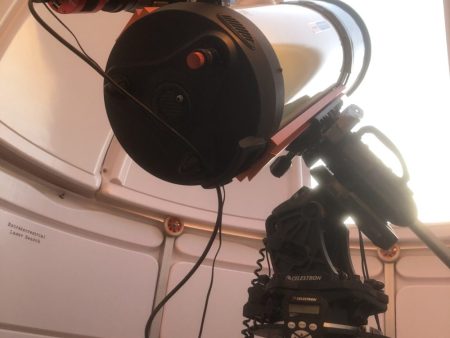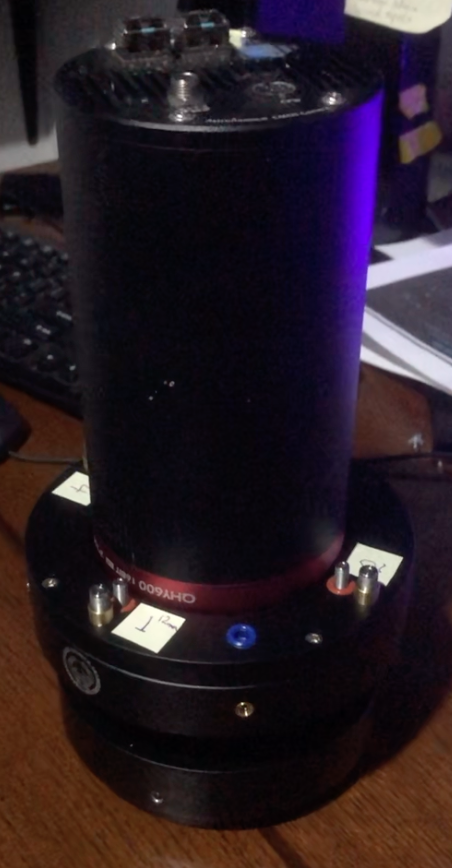The observatory infrastructure consists of several components. A data-taking room 10 x 12 feet was constructed by TuffShed. The interior walls and electrical lines were done by Chris Cox and LadyBee Electric led by Britt Scott, who also installed AC and electrical conduit lines from the data-taking room underground to the center of the dome.
The dome came pre-fabricated, made by NexDome, 2.6 meters in diameter and 3 meters high. We placed the dome on top of a ring wall 0.45 meters high, made of three rows of blocks (see images below).
At the center of the dome ring Vinny Herring used a 12-inch diameter auger to dig a hole 4 feet deep for the steel pier. The bottom of the hole extends about 1 foot into bedrock. The steel pier has a diameter of 4 inches and length 8 1/2 feet, and was placed into the bottom of the hole, allowing it to extend 4 feet 1 inch above the top of the concrete pad (that is 4 inches thick). The steel pier was set in concrete in its hole. That 4 foot 1 inch height above the pad, in addition to the mount that is 22 inches tall, places the bottom of the telescope 5 feet 11 inches above the concrete pad so that the bottom of the telescope tube can just barely “see” the horizon over the dome wall.
We purchased an adaptor for the existing CGX-L mount from Pier-Tech. Vinny welded a flat piece of steel to the top of the steel pier. The flat piece had holes drilled in it at the same locations as the threaded holes in the bottom of the CGX-L adaptor, allowing us to screw them together. The CGX-L adaptor can be replaced by a different adaptor, if needed in the future.
The following images show the various components of the data-taking room, the dome, and the pier, under construction:

The station at Taylor Mountain Observatory is set on beautiful flower gardens.

Data-taking room. At bottom left, the PC controls the telescope and two CMOS cameras operating at 4 frames/sec. The left computer display shows the real-time objective prism images coming 4 frames/sec from both cameras.

The 0.28-meter objective prism telescope (RASA+prism+QHY600M CMOS camera), with the piggy-back 0.08-meter objective prism telescope (Stellarvue + prism + ZWO ASI1600), at the Taylor Mountain Observatory.

The QHY600M camera is independently focussed and adjusted for tip-tilt with an Octopi . The adjustment screws at the bottom permit displacement of the camera sensor in increments of 0.1 millimeters (and even less), necessary to achieve excellent quality point-spread-function (PSF) of star images over the entire field of view with the RASA telescope.

The final dome and data-taking room at Space Laser Awareness, from the outside.